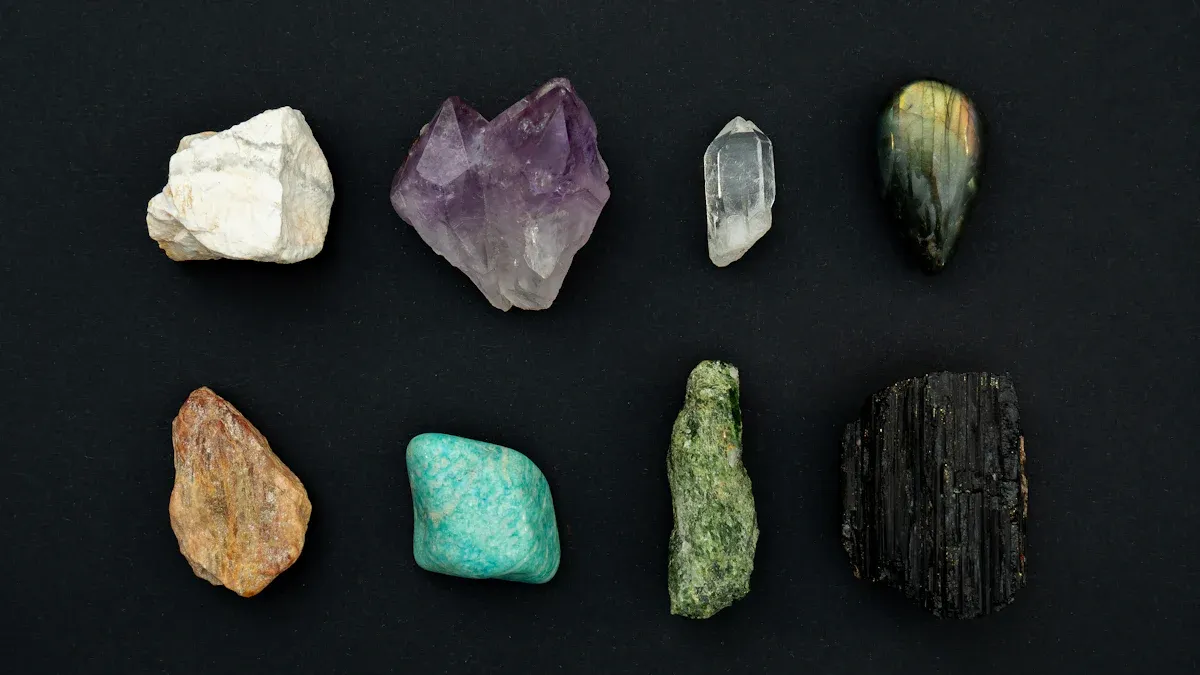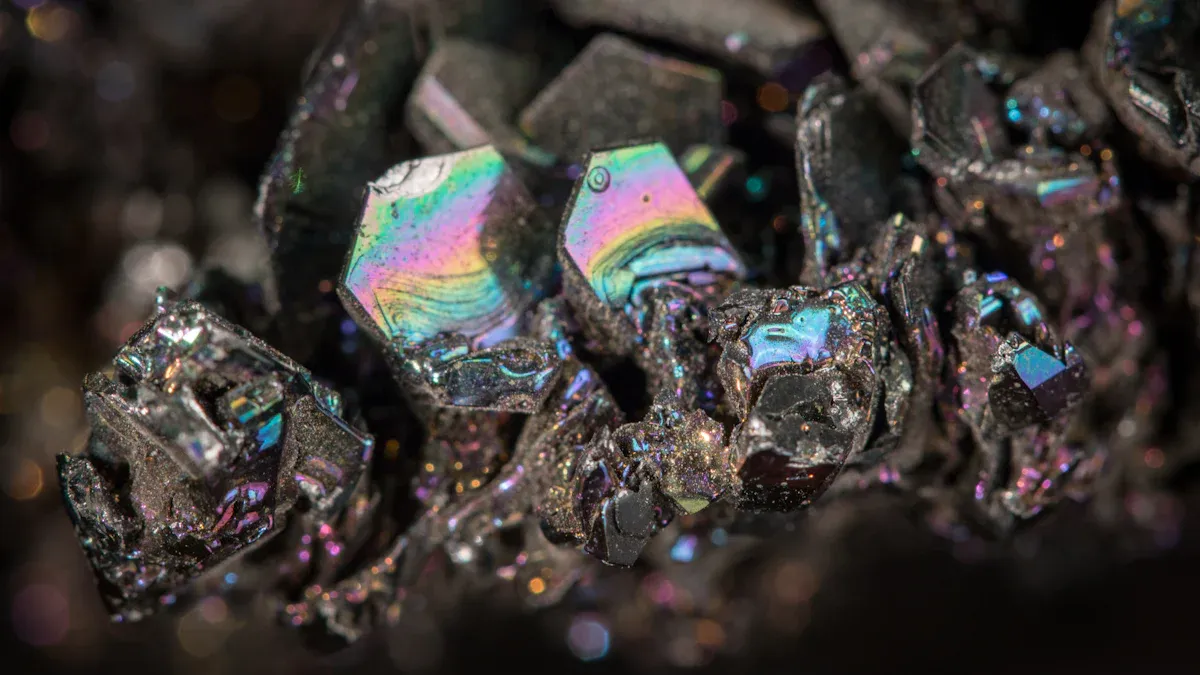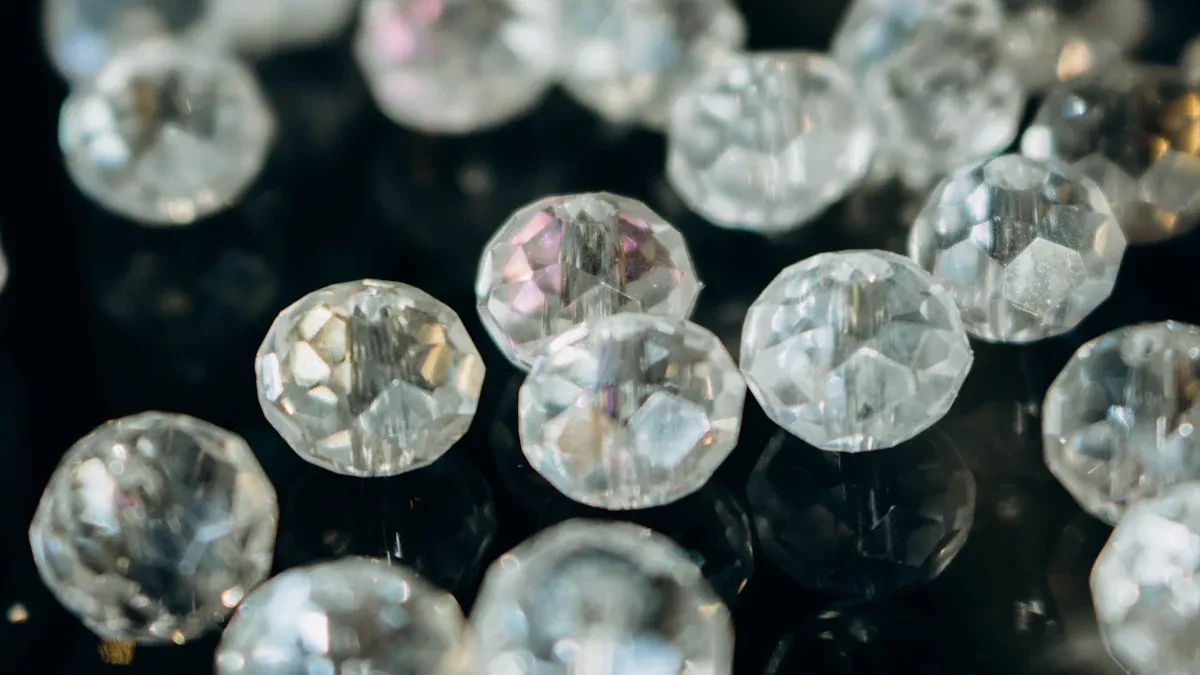
You might wonder how cutting-edge materials like CVD SiC Layers achieve their exceptional properties. Plasma-Enhanced CVD revolutionizes this process by using plasma to energize chemical reactions. This method allows you to create ultra-thin, precise layers while improving efficiency. The result? Superior material performance tailored to meet the demands of modern industries.
Key Takeaways
- Plasma-Enhanced CVD (PECVD) helps make very thin silicon carbide layers. These layers are more precise and have fewer flaws, perfect for advanced uses.
- PECVD works at cooler temperatures than older methods. This keeps materials strong and stable, which is important for electric cars and green energy.
- PECVD is very efficient. It works faster and uses less energy, letting factories produce more without losing quality.
Traditional CVD Techniques and Their Limitations
Conventional Methods for CVD SiC Layers
Chemical Vapor Deposition (CVD) has long been the go-to method for creating silicon carbide (SiC) layers. In traditional CVD, you heat a substrate to high temperatures while introducing gas-phase precursors. These precursors react on the substrate’s surface, forming a thin SiC layer. This process works well for producing high-quality materials. However, it often requires extreme conditions, such as temperatures exceeding 1000°C, which can limit its practicality.
You might find this method effective for basic applications, but it struggles to meet the growing demand for advanced materials. The need for precise control over layer thickness and uniformity becomes a challenge with conventional techniques.
Challenges in Uniformity and Precision
Achieving consistent layer thickness across a substrate is one of the biggest hurdles in traditional CVD. Variations in temperature or gas flow can lead to uneven deposition. This inconsistency affects the performance of CVD SiC Layers, especially in applications requiring high precision. You may also encounter issues with defects, such as pinholes or cracks, which compromise the material’s integrity.
Scalability and Material Property Issues
Scaling up traditional CVD processes for larger substrates or higher production volumes introduces additional challenges. Maintaining uniformity across larger areas becomes increasingly difficult. Furthermore, the high temperatures required can alter the material properties, making it harder to achieve the desired thermal and mechanical stability. These limitations make traditional CVD less suitable for industries demanding advanced SiC materials.
Introduction to Plasma-Enhanced CVD (PECVD)

Plasma’s Role in SiC Deposition
Plasma plays a crucial role in transforming how you deposit silicon carbide layers. Plasma consists of highly energized particles, including ions and electrons, that drive chemical reactions at lower temperatures. When you use plasma in the deposition process, it activates the gas-phase precursors, enabling them to bond with the substrate more efficiently. This energy boost allows you to achieve precise control over the deposition process, even at temperatures much lower than those required by traditional methods.
By leveraging plasma, you can create CVD SiC Layers with improved uniformity and fewer defects. Plasma enhances the reaction rate, ensuring consistent layer formation across the substrate. This makes it an ideal choice for applications demanding high-quality materials.
Key Differences Between PECVD and Traditional CVD
Plasma-Enhanced CVD differs significantly from traditional CVD techniques. In PECVD, you use plasma to energize the precursors, reducing the need for extreme temperatures. Traditional CVD relies solely on thermal energy, often exceeding 1000°C, which can limit its practicality.
PECVD offers you greater control over the deposition environment. You can adjust plasma parameters, such as power and frequency, to fine-tune the process. This flexibility allows you to achieve better precision and uniformity in CVD SiC Layers. Additionally, PECVD minimizes defects like pinholes and cracks, which are common in traditional methods.
Addressing Challenges in CVD SiC Layers
PECVD addresses many challenges associated with traditional CVD techniques. Uniformity and precision, often problematic in conventional methods, improve significantly with plasma-enhanced processes. You can achieve consistent layer thickness across larger substrates, making PECVD ideal for scaling up production.
The lower temperatures used in PECVD also preserve the material properties of CVD SiC Layers. This ensures enhanced thermal and mechanical stability, which is critical for advanced applications. By adopting PECVD, you can overcome the limitations of traditional methods and meet the growing demand for high-performance materials.
Advantages of PECVD in SiC Deposition

Efficiency and Deposition Speed
Plasma-Enhanced CVD (PECVD) significantly improves the efficiency of silicon carbide deposition. By using plasma to energize chemical reactions, you can achieve faster deposition rates compared to traditional methods. Plasma accelerates the bonding process between precursors and the substrate, reducing the time required to form high-quality layers.
This speed advantage becomes crucial when scaling up production. Whether you’re working on small-scale prototypes or large industrial batches, PECVD allows you to meet tight deadlines without compromising material quality. Faster deposition also translates to lower energy consumption, making PECVD a cost-effective choice for creating CVD SiC Layers.
팁: Faster deposition doesn’t mean sacrificing precision. PECVD ensures both speed and accuracy, making it ideal for industries requiring advanced materials.
Precision and Uniformity in Layer Thickness
Achieving uniform layer thickness is a challenge in traditional CVD processes. PECVD solves this problem by offering precise control over deposition parameters. Plasma enables you to fine-tune variables like power, frequency, and gas flow, ensuring consistent layer formation across the substrate.
With PECVD, you can create ultra-thin layers with remarkable uniformity. This precision is essential for applications where even minor variations in thickness can impact performance. For example, in microelectronics, consistent layers improve conductivity and reduce the risk of defects.
You also benefit from fewer imperfections, such as pinholes or cracks. Plasma’s ability to enhance reaction rates minimizes these defects, resulting in smoother and more reliable CVD SiC Layers.
Enhanced Thermal and Mechanical Stability
PECVD enhances the thermal and mechanical stability of silicon carbide layers. Lower deposition temperatures preserve the intrinsic properties of the material, ensuring it can withstand extreme conditions. This stability is vital for applications in power electronics and electric vehicles, where materials must endure high heat and mechanical stress.
The plasma-driven process also improves the bonding strength between the layer and substrate. Stronger bonds reduce the risk of delamination, ensuring long-term durability. Whether you’re designing components for renewable energy systems or advanced semiconductors, PECVD provides the reliability you need.
참고 : Enhanced stability means fewer maintenance requirements and longer lifespans for your products, saving you time and resources in the long run.
Applications of PECVD in Industry
Semiconductor and Microelectronics
Plasma-Enhanced CVD (PECVD) has become a cornerstone in semiconductor and microelectronics manufacturing. You can use PECVD to deposit ultra-thin silicon carbide layers with exceptional precision. These layers improve the performance of microchips, transistors, and integrated circuits.
In microelectronics, uniformity is critical. PECVD ensures consistent layer thickness, which enhances conductivity and reduces the risk of defects. This precision allows you to create devices that operate reliably under demanding conditions.
Did you know? PECVD’s ability to work at lower temperatures makes it ideal for depositing materials on heat-sensitive substrates, such as those used in advanced microchips.
PECVD also supports the miniaturization trend in electronics. As devices become smaller, the need for thinner and more uniform layers grows. PECVD helps you meet these requirements while maintaining high production efficiency.
Electric Vehicles and Power Electronics
The electric vehicle (EV) industry relies on advanced materials to improve battery performance and power management systems. PECVD plays a vital role in this sector by enabling the deposition of silicon carbide layers with enhanced thermal and mechanical stability.
You can use PECVD to create SiC layers that withstand high temperatures and mechanical stress. These properties are essential for power electronics, such as inverters and converters, which manage the flow of electricity in EVs. Stronger and more stable layers reduce energy loss, improving the efficiency of these systems.
PECVD also supports the development of lightweight components. By depositing thin yet durable layers, you can reduce the overall weight of EV systems, increasing their energy efficiency.
팁: PECVD’s scalability makes it suitable for mass production, helping manufacturers meet the growing demand for electric vehicles.
Renewable Energy Systems
Renewable energy systems, such as solar panels and wind turbines, require materials that can endure harsh environmental conditions. PECVD allows you to deposit silicon carbide layers with superior durability and resistance to wear.
In solar panels, PECVD improves the efficiency of photovoltaic cells. You can use PECVD to create anti-reflective coatings that enhance light absorption, boosting energy output. These coatings also protect the panels from damage caused by UV radiation and extreme weather.
Wind turbines benefit from PECVD’s ability to produce wear-resistant coatings. Silicon carbide layers reduce friction and extend the lifespan of turbine components. This durability minimizes maintenance costs and ensures consistent energy production.
참고 : PECVD’s energy-efficient process aligns with the sustainability goals of renewable energy systems, making it a preferred choice for eco-friendly manufacturing.
Emerging Trends and Innovations in PECVD Technology
Advances in Plasma Control
Recent advancements in plasma control have revolutionized PECVD technology. You can now fine-tune plasma parameters with unprecedented precision. Adjusting variables like power, frequency, and gas flow allows you to optimize the deposition process for specific applications.
Modern systems also incorporate real-time monitoring tools. These tools help you track plasma behavior during deposition. By analyzing this data, you can make immediate adjustments to improve layer quality.
팁: Using advanced plasma control, you can achieve higher uniformity and reduce defects in SiC layers, even for complex geometries.
Another breakthrough involves multi-frequency plasma systems. These systems let you combine different frequencies to enhance reaction rates. This innovation boosts deposition speed without compromising material quality.
AI and Machine Learning Integration
Artificial intelligence (AI) and machine learning (ML) are transforming PECVD processes. By analyzing large datasets, AI can identify patterns and predict outcomes. This helps you optimize deposition parameters for better results.
Machine learning algorithms also enable predictive maintenance. They can detect equipment issues before they cause downtime. This reduces operational costs and ensures consistent production.
Did you know? AI-driven systems can adapt to changing conditions in real time, making PECVD more efficient and reliable.
Sustainability in Manufacturing
Sustainability has become a key focus in PECVD technology. You can now use eco-friendly precursors that reduce harmful emissions. Lower deposition temperatures also save energy, aligning with green manufacturing goals.
Recycling plasma gases is another innovation. This reduces waste and lowers production costs. By adopting these practices, you contribute to a more sustainable future.
참고 : Sustainable PECVD processes not only benefit the environment but also improve your bottom line by reducing resource consumption.
Plasma-Enhanced CVD has revolutionized how you create CVD SiC Layers. It meets the demand for advanced materials by offering precision, efficiency, and scalability. As industries evolve, PECVD will continue driving innovation, enabling you to develop materials that meet the challenges of tomorrow. Its role in shaping the future of SiC deposition is undeniable.
제품 정보
What makes PECVD better than traditional CVD for SiC deposition?
PECVD uses plasma to lower deposition temperatures and improve uniformity. This method ensures faster, more precise SiC layer formation with fewer defects compared to traditional CVD.
Can PECVD handle large-scale production?
Yes, PECVD scales efficiently. Its ability to maintain uniformity across large substrates makes it ideal for high-volume manufacturing in industries like semiconductors and electric vehicles.
Is PECVD environmentally friendly?
Absolutely! PECVD uses lower temperatures and eco-friendly precursors. Recycling plasma gases also reduces waste, aligning with sustainable manufacturing practices. 🌱
팁: PECVD’s energy efficiency benefits both the environment and your production costs.


